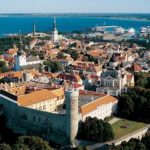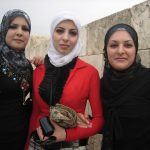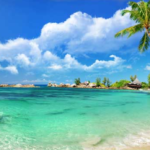Two guest writers describe a realistic picture of oppressed life for lesbigays in this small country racked by humiliating poverty and insane revolution over the past generation. Yet small pockets of hope live on in lesbigay hearts and in a few bars in downtown Guatemala City.
Also see:
Gay Guatemala News & Reports 1996 to present
(1)
In Guatemala, Bashing Is Just the Beginning
By Andrew Reding
June 1999 (page updated June 2007)
From The Dawn of Gay Rights
( http://www.americas.org/News/Features/199906_Gay_Rights/index.asp)
On October 22, 1997, well-known drag queen Geraldo Estupinian (“Stacy”) was found badly beaten and near death in a roadside ditch outside Guatemala City. He died shortly thereafter.
Six days later, unidentified assailants shot to death Julio Alfredo (“Freddy”) de la Roca Toledo, a dancer and choreographer, in front of his house. Without corroborating evidence, the National Civilian Police (PNC) attributed the killing to a band of carjackers.
On February 20, 1998, assailants in a gray car with tinted windows shot to death a transvestite in the capital. Fire fighters who arrived at the scene had to wait several hours for police to show up.
And so on. Guatemala has no laws prohibiting homosexuality, but the subject is so taboo, and anti-gay violence so accepted, that openly gay groups simply do not exist. This distinguishes Guatemala from Costa Rica, Panama, Honduras and El Salvador, where out-gay groups have formed in the 1990s.
“There are abuses against gays and lesbians by governmental authorities in the form of rape, forced fellatio, imprisonment without trial for prolonged periods, theft of personal belongings, beatings, threats to cause bodily harm, and death,” says Rubén Mayorga, a French-trained physician who is executive director of the Integral Sexuality AIDS Support Organization (OASIS). “I have personally witnessed the effects.”
Police regularly harass and detain homosexuals, using vague laws forbidding “scandalous behavior.” And homosexuals can’t count on authorities to protect them from violence or pursue assailants after the fact.
Security forces also regularly describe crime victims as being homosexual to make the offenses seem less serious. Anthropologist Myrna Mack, murdered by an army death-squad member in 1990, and U.S. nun Dianna Ortiz, kidnapped and tortured by the army in 1989, were both said to be lesbians. Guatemala City Bishop Juan Gerardi, murdered in 1998, was said to be gay.
Lesbians face distinct repression. The perception is that they have chosen their orientation either because they can’t attract men or because they haven’t had intercourse with a “real” man. This belief makes Guatemalan lesbians particularly vulnerable to rape, as assailants claim they’re doing the women a favor.
The leader of an OASIS affiliate called We Are Women, Guatemala’s only lesbian organization, describes other obstacles. “It’s more difficult for lesbians who are married to meet their lovers than it is for gay men who are married,” she says. “Women don’t have the cultural permission to come and go as they please.”
“On the other hand,” she adds, “women have more freedom to be close and affectionate with each other. Two women can hold hands in public, and they can share a bed as friends, but two men cannot.”
Latin American machismo equates maleness with dominance, and homosexuality with submission. It’s not unusual for a purportedly heterosexual man to brag about oral and anal sex with another man, but it’s always the other guy who was on the bottom. A penetrated man has been feminized, which inspires shame and ridicule.
Those who accept and openly flaunt the submissive role, as do transvestites, are subject to abuse. Yet male prostitutes must dress and act like women to help customers maintain the illusion that they’re straight.
This trap is especially dangerous in Guatemala, where it’s routine to dehumanize and eliminate large groups of people. A U.N. mission monitoring implementation of the nation’s 1996 peace accords notes “social cleansing” and “extrajudicial execution” of transvestites through “planned and coordinated actions.”
Homosexuals of all varieties face intense discrimination. After AIDS activist Mayorga was nominated to be infectious disease specialist at the Herrera Llerandi Hospital in Guatemala City, some of his colleagues objected, citing his presumed sexual orientation. He was fired without explanation a few months later. Similarly, when newspapers published photos of We Are Women members in an International Women’s Day demonstration, one of the women was fired by her employer.
Pandora’s Box—Guatemala’s first and, until recently, only gay bar—opened in 1976. The owners of most gay bars “pay regular ‘financial contributions’ to guarantee that their bars are not closed and their clients are not harassed,” Mayorga says.
But that doesn’t guarantee safety. Men seen at Pandora’s have been fired from their jobs. A TV show on “Pornography in Guatemala” showed faces of patrons at Trilogy, another gay bar, against their will. This led to the firing of one of the patrons from his job, Mayorga says.
But there is hope. A dozen groups are responding to AIDS. (OASIS, which formed in 1993, is the only one that addresses gay issues, a strategy that has opponents even among the group’s 200 members.)
The Center for Human Rights and Legal Action (CALDH) initiated a project against AIDS/HIV discrimination in 1997. While the group does not address gay sexuality, it does reach a mass audience through posters, calendars and radio spots. And its cartoon series appears in the daily Prensa Libre.
Considering the obstacles in Guatemala, it’s a decent start.
(2)
Gay Life Emerges In Guatemala
by Richard Stern
October 16, 2000.
San Jose, Costa Rica
From the Gully
(http://www.thegully.com/essays/gaymundo/001016gay_guat.html)
Gay life has begun to emerge from its closet in Guatemala in the last few years. The evolution is due in part to persistent, activist bar owners and gay HIV/AIDS prevention pioneers. But thousands of gay and lesbian Guatemalans still have to hide their sexual identity to survive in this Roman Catholic, macho, and very violent society.
Guatemala City
Virtually all organized gay life takes place in Guatemala City, the capital, a sprawling, polluted metropolis of over 3 million. On a two-week visit there last February, my guide was Douglas Lara, a 31-year-old AIDS educator who works for OASIS, Guatemala’s only openly gay and lesbian organization.
For Douglas, things are not so bad. He shares a two-bedroom apartment with his lover Byron, has a job where he doesn’t fear discrimination, and also has a comfortable support group of gay, lesbian, and even a few straight friends who accept him. He can go to the discos at night, visit a gay-friendly restaurant for lunch, and shop at commercial centers offering the latest designer products, although he can’t do much buying on his $250-a-month salary.
Pandora’s Box, a recently remodeled discotheque, has survived as a gay establishment in Guatemala for over 20 years, although it was understandably less popular in the days of the civil war that ended in 1996. It was filled to capacity on a Saturday night. There were two dance floors, as well as a rooftop patio, and even a "dark room." A fashion show sponsored by a local boutique was programmed for 1 a.m. Outside, parked cars lined the streets for blocks. Almost everyone inside was under-30, and relaxed. You would have thought you were in New York.
But leaving the bar, the bone-chilling wind of the Guatemalan night reminds you of the culture of violence in Guatemala and its hostility toward men and women who do not live up to the cultural stereotypes of how they are supposed to be. Several transvestites and gay men have been killed in recent years.
"In Guatemala as in the other Central American nations, there are still serious problems for gays and lesbians," says OASIS director, Ruben Mayorga. "Physical violence against our community is common. Only about five percent of the gay population here even goes to the bars. Most gay Guatemalans are completely in the closet, afraid of anyone knowing about their sexual preference."
Public cruising is a popular, if dangerous, way for gay men in Guatemala to link up. In the area surrounding the capital’s Cathedral square it is easy to meet men, if you’re willing to take a risk. Many are reportedly young, "gay for pay" immigrants from Honduras and El Salvador, desperately in need of cash. El Encuentro, Ephebus, and Eclipse, Guatemala’s three other major gay bars, are also in this area.
El Encuentro Bar: Hotbed of AIDS Activism
El Encuentro is a surprisingly quiet bar, given its location in the back of the Capitol Center, a popular shopping mall. Early on a Friday evening, half a dozen gay couples were seated at tables. Mario Andrade, the owner, came in and personally greeted each of the guests. Andrade has been a pioneering figure in gay life in Guatemala for the past thirty years. Over ‘bocas’ (snacks) he told me that he has run El Encuentro for 17 years, surviving numerous raids. "But things are much better now," he said, noting that last year he opened the Ephebus, a discotheque, just a few blocks away.
"Gays here are learning to accept themselves. That is the first step. We have created some spaces. Now we need to continue to receive respect from the heterosexual community," Andrade said.
Besides running two businesses, Andrade heads APAES, an AIDS prevention and support organization that helps people living with AIDS in Guatemala, both straight and gay. For years, he has traveled to Miami to seek the donated medications that APAES distributes. Only about 15% of Guatemalans living with AIDS have access to anti-retroviral medications. The rest rely on infrequent donations.
There are 4,000 registered AIDS cases in Guatemala. Half of them are probably gay or bisexual men, although the official figures are much lower. Says Ruben Mayorga, of OASIS: "The ‘machista’ culture in Central America forces most gay men to remain underground. They are too afraid and too repressed to report their actual sexual preference to anyone, much less government health care authorities."
Douglas Lara told me that more than twenty of his gay friends here have died of AIDS. "It is a shame," he says, "because in the U.S. these medications are readily available, but who in Guatemala can afford to pay $800 per month? Corporate greed and international indifference are killing my country’s gay men."
Richard Stern is Director of the Agua Buena Human Rights Association in San Jose, Costa Rica. He works to improve access to treatment for people living with HIV/AIDS in Central America.
















